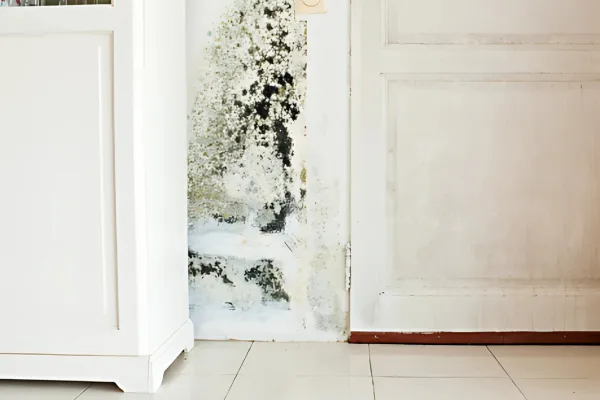
Trichothecenes: Toxic Byproducts of Water-Damaged Buildings and Their Unthinkable Legacy
A Hidden Danger in Indoor Air
Trichothecenes are among the most dangerous mycotoxins produced by indoor molds, particularly in water-damaged buildings (WDBs). These potent fungal toxins are not only hazardous to occupants through chronic low-dose exposure, but also have a dark and controversial history involving their alleged use as biological weapons.
In this blog, we’ll explore how trichothecenes affect human health when inhaled or absorbed from moldy environments, why they’re so persistent and dangerous, and the evidence of their deployment in chemical warfare.
Trichothecenes in Water-Damaged Buildings
What Are Trichothecenes?
Trichothecenes are a group of lipid-soluble, heat-stable, and highly toxic compounds produced by several indoor molds including species of:
Stachybotrys chartarum (commonly known as “black mold”)
Fusarium
Myrothecium
These molds thrive on cellulose-rich materials such as drywall, ceiling tiles, and wallpaper—especially in damp, poorly ventilated conditions. Trichothecenes become airborne through spores and mycotoxin-laden fragments, making inhalation, skin contact, and even dust ingestion potential exposure routes in water-damaged indoor spaces.
Health Effects from Indoor Trichothecene Exposure
Unlike foodborne exposure, which is usually acute and tied to contaminated grains, indoor trichothecene exposure is often chronic and insidious, leading to complex, multi-system symptoms.
Symptoms of Exposure Include:
Neurological: brain fog, dizziness, headaches, tremors, memory loss
Immune: immunosuppression, frequent infections, autoimmune activation
Respiratory: chronic sinusitis, cough, asthma-like symptoms
Skin and Eyes: rashes, burning, photophobia
Systemic: fatigue, hormone disruption, gastrointestinal issues
Because trichothecenes inhibit protein synthesis, they trigger cellular apoptosis, oxidative stress, and mitochondrial dysfunction. They also damage epithelial barriers like the gut lining and blood-brain barrier, increasing systemic vulnerability.
Why Are Trichothecenes So Problematic in Indoor Environments?
Extremely Stable: They resist degradation by heat, UV, and many cleaning agents.
Aerosolized and Inhaled: Unlike food toxins, trichothecenes in buildings are airborne and easily inhaled into lungs and sinuses.
Absorbent Building Materials: Drywall, wallpaper glue, carpet padding, and wood often trap and retain toxins.
Biofilm Protected: In WDBs, fungi often live in complex biofilms, making eradication difficult and recontamination common.
Many people suffering from mold-related illness—especially Chronic Inflammatory Response Syndrome (CIRS)—test positive for trichothecene exposure through urinary mycotoxin testing.
Trichothecenes as a Weapon: The “Yellow Rain” Allegations
Biological Warfare in the 1980s?
Trichothecenes are not only environmental hazards—they've also been linked to one of the most controversial biological warfare cases in modern history.
In the early 1980s, reports emerged of mysterious attacks in Southeast Asia and Afghanistan involving a sticky yellow substance falling from aircraft—allegedly causing:
Hemorrhaging
Vomiting and convulsions
Blistered skin
Sudden deaths
Known as “Yellow Rain,” this substance was believed by U.S. investigators to contain T-2 toxin, a particularly potent trichothecene.
Scientific and Political Dispute
Supporters of the chemical warfare theory argued that trichothecenes were identified in blood and soil samples from affected areas.
Skeptics, however, countered that the yellow droplets may have been bee feces, not a weaponized substance.
Regardless of the controversy, the CDC and U.S. Department of State maintained for years that trichothecenes had been used in violation of international treaties.
Implications for Public Health and Clinical Practice
Whether naturally produced in a moldy basement or allegedly weaponized in war, trichothecenes underscore the importance of:
Environmental testing for mycotoxins in symptomatic patients living or working in WDBs
Proper remediation, not just of visible mold but of toxic residues in porous materials
Medical detoxification protocols, including binding agents and liver support for those with chronic exposure
The idea that a toxin capable of warfare is hiding in your drywall may sound sensational—but for many patients suffering from mold-related illness, it's a biological reality.
Conclusion: Awareness, Advocacy, and Action
Trichothecenes illustrate the disturbing overlap between environmental health and toxicology, revealing how a moldy ceiling or neglected leak can have profound effects on human biology. They are not just contaminants—they are cellular disruptors, immune saboteurs, and neurological agitators.
If you or someone you know has been struggling with unexplained chronic illness, consider the possibility of environmental mold exposure—and remember that trichothecenes are among the most potent and persistent culprits.
